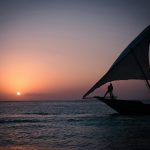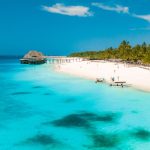A Tanzania safari is an experience of a lifetime. From the vast savannas of the Serengeti to the lush landscapes of the Ngorongoro Crater, the country offers some of the world’s best wildlife encounters. But before you pack your bags and head to East Africa, it’s important to have some key information to ensure your trip is smooth and enjoyable. This guide answers some of the most frequently asked questions (FAQs) about Tanzania safaris, giving you everything you need to know.
Why Should I Choose Tanzania for a Safari?
Tanzania is often considered the ultimate safari destination, and for good reason. The country’s rich wildlife, iconic national parks, and diverse landscapes offer travelers a unique and immersive experience.
-
Rich Wildlife: Tanzania is home to the “Big Five” (lions, leopards, elephants, buffaloes, and rhinos) and an abundance of other animals. From the endangered black rhino to thousands of wildebeests, the variety is staggering.
-
Diverse Landscapes: The country’s terrain ranges from vast plains to tropical beaches, offering not only incredible wildlife but also breathtaking views.
-
Access to Iconic National Parks: Tanzania is home to some of the most famous parks in the world, such as the Serengeti and the Ngorongoro Crater, making it a bucket-list destination for many safari lovers.
When is the Best Time to Go on a Tanzania Safari?
The best time to visit Tanzania depends on what you want to experience.
-
Dry Season (June to October): This is the most popular time for safaris. The animals gather around water sources, making it easier to spot them. The weather is generally sunny and dry, ideal for game drives.
-
Green Season (November to May): The green season, while less popular, offers lush landscapes and fewer tourists. This is also the time when the Great Migration takes place, with millions of wildebeest moving through the Serengeti.
Here’s a quick breakdown by month:
-
January to March: Great for seeing baby animals and the calving season in the Serengeti.
-
June to September: Ideal for dry-season safaris, when wildlife congregates around waterholes.
-
November to December: Perfect for witnessing the Great Migration and experiencing fewer crowds.
How Do I Plan My Tanzania Safari?
Planning a Tanzania safari can be exciting, but it requires some thought and preparation. Here are the key steps:
-
Choosing a Tour Operator: It’s advisable to book with a reputable operator that knows the ins and outs of Tanzania. They can help with accommodations, park fees, and itineraries.
-
Deciding on Safari Style: You can choose between group tours, private tours, or luxury safaris depending on your budget and preferences.
-
Budgeting Tips: Tanzania safaris can range from budget to luxury experiences. Make sure to include accommodations, park fees, tips, and meals when calculating costs.
What National Parks and Reserves Should I Visit?
Tanzania boasts some of the most renowned national parks and reserves in Africa.
-
Serengeti National Park: Famous for the Great Migration, this park is a must-see for any safari enthusiast. The endless plains are teeming with wildlife.
-
Ngorongoro Crater: A UNESCO World Heritage Site, this crater is often called “Africa’s Garden of Eden.” It’s one of the best places to see a wide variety of animals in one day.
-
Tarangire National Park: Known for its large elephant herds and unique baobab trees, Tarangire offers a quieter, less crowded safari experience.
-
Lake Manyara National Park: This park is home to tree-climbing lions and offers stunning views over the Great Rift Valley.
What Animals Can I See on a Tanzania Safari?
Tanzania is a haven for animal lovers. You’ll likely encounter:
-
The Big Five: Lions, leopards, elephants, buffaloes, and rhinos.
-
Other Wildlife: Cheetahs, giraffes, zebras, wildebeests, and hippos.
-
Birdlife: The country has over 1,000 bird species, including flamingos, ostriches, and vultures.
What Should I Pack for a Tanzania Safari?
When preparing for your safari, consider the following:
-
Essentials: Sunscreen, a hat, insect repellent, and a camera.
-
Clothing: Neutral-colored clothing (think beige, brown, and khaki) is recommended to blend in with the environment.
-
Gear: A good pair of binoculars, a waterproof jacket, and a pair of sturdy shoes.
-
Documents: Ensure your passport and visa are in order before you leave.
Is Tanzania Safari Safe?
Tanzania is generally safe for tourists, but like any travel destination, it’s important to take precautions:
-
Safety Precautions: Stick to well-known tourist areas and always follow your guide’s instructions.
-
Health Considerations: Vaccinations for diseases like yellow fever and malaria are recommended. Consult your doctor before your trip.
How Much Does a Tanzania Safari Cost?
Costs can vary significantly depending on your choices:
-
Budget Safaris: Around $150–$250 per day for basic accommodations and transport.
-
Luxury Safaris: Can cost upwards of $500 per day, including luxury lodges and exclusive experiences.
Do I Need a Visa for a Tanzania Safari?
Yes, most visitors will need a visa to enter Tanzania. Visas can be obtained on arrival or online through the Tanzanian government’s eVisa portal.
Can I Combine a Tanzania Safari with Other Destinations?
Absolutely! Tanzania is a hub for other exciting adventures:
-
Zanzibar Island: A tropical paradise with white-sand beaches and rich cultural history.
-
Kilimanjaro: If you’re feeling adventurous, you can add a Kilimanjaro climb to your itinerary.
-
Selous Game Reserve: Another safari destination, this one offers more remote and secluded experiences.
What’s the Best Safari Experience for Families?
For families with children, consider lodges that offer child-friendly activities like nature walks, junior ranger programs, and educational wildlife experiences.
What Are Some Common Mistakes to Avoid on a Tanzania Safari?
-
Overpacking: Pack light and only take essentials.
-
Ignoring Local Customs: Be respectful of local traditions and dress codes.
-
Not Being Prepared for the Heat: It can get very hot, so make sure to stay hydrated and wear breathable clothing.
How Can I Make the Most of My Tanzania Safari?
-
Photography Tips: Bring a zoom lens and always be ready for spontaneous moments.
-
Maximizing Wildlife Viewing: Stay quiet, be patient, and follow your guide’s advice on the best spots to view animals.
-
Sustainable Tourism: Be mindful of your environmental impact and respect local wildlife.
Conclusion
A Tanzania safari is undoubtedly an unforgettable adventure. With proper planning, you can immerse yourself in the country’s extraordinary wildlife, stunning landscapes, and rich culture. Whether you’re seeking the thrill of seeing the Big Five or experiencing the Great Migration, Tanzania offers something for every traveler.
FAQs
-
What is the best time of year to visit Tanzania for a safari?
-
The dry season (June to October) is the best time for wildlife viewing, but the green season (November to May) offers lush scenery and fewer crowds.
-
-
Can I do a safari in Tanzania with children?
-
Yes! Many lodges offer family-friendly activities and safaris tailored to young travelers.
-
-
What should I wear for a Tanzania safari?
-
Light, neutral-colored clothing that blends into the environment, along with sturdy shoes for walking and sun protection.
-
-
Are there malaria risks in Tanzania?
-
Yes, malaria is present in certain areas, so take precautions, including anti-malarial medication and insect repellent.
-
-
How do I book a Tanzania safari?
-
You can book a safari through a reputable tour operator who will help with planning, accommodations, and park fees.
-



